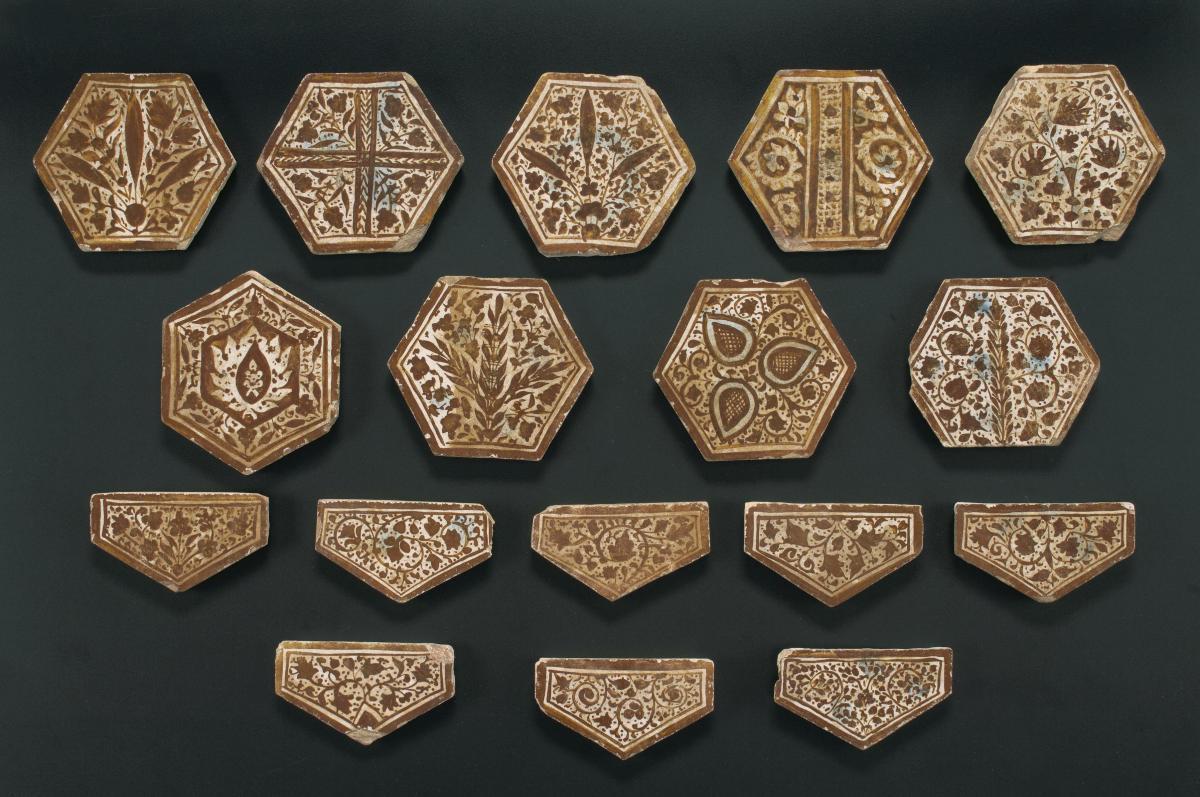Geometry and floral or foliate motifs are among the most widely used forms of decoration in West Asia. These tiles are decorated with variations of palmette and floral designs. The development of lustre was the Islamic potters’ response to recreating the gleam of precious metal on ceramics. Owing to its fragility, lustre tiles were usually used within the interior of buildings and on decorative ceramic vessels. The use of glazed tiles to decorate the walls of buildings has a long tradition in the Islamic world. The cladding of entire buildings with tiles became very popular from the 14th century onwards. When assembled, these hexagonal tiles would have looked impressive - forming a glimmering, geometric expanse across the wall.






